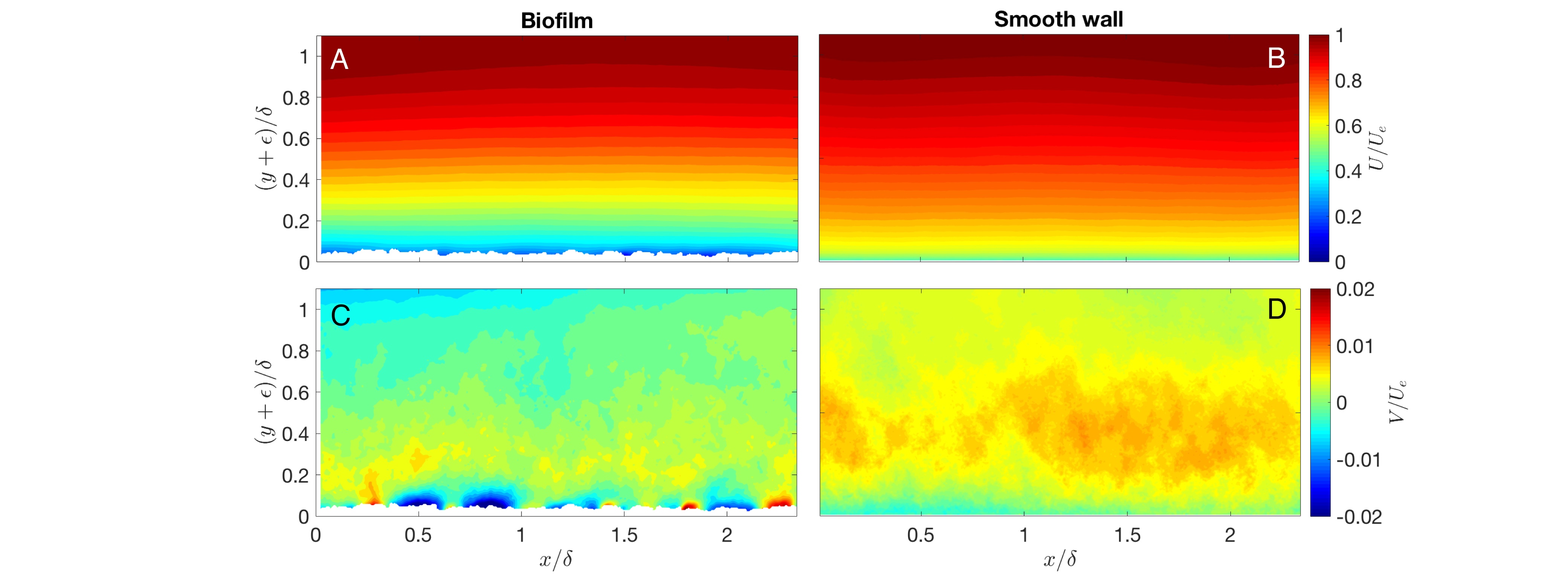 Time-averaged streamwise (A and B) and vertical (C and D) velocity over a biofilm (left panels) and smooth wall (right panels).
Time-averaged streamwise (A and B) and vertical (C and D) velocity over a biofilm (left panels) and smooth wall (right panels).
Roughness effects of diatomaceous slime fouling on turbulent boundary layer hydrodynamics
Abstract
Biofilm fouling significantly impacts ship performance. Here, the impact of biofilm on boundary layer structure at a ship-relevant, low Reynolds number was investigated. Boundary layer measurements were performed over slime-fouled plates using high resolution particle image velocimetry (PIV). The velocity profile over the biofilm showed a downward shift in the log-law region (ΔU+), resulting in an effective roughness height (ks) of 8.8 mm, significantly larger than the physical thickness of the biofilm (1.7 ± 0.5 mm) and generating more than three times as much frictional drag as the smooth-wall. The skin-friction coefficient, Cf, of the biofilm was 9.0 × 10−3 compared with 2.9 × 10−3 for the smooth wall. The biofilm also enhances turbulent kinetic energy (tke) and Reynolds shear stress, which are more heterogeneous in the streamwise direction than smooth-wall flows. This suggests that biofilms increase drag due to high levels of momentum transport, likely resulting from protruding streamers and surface compliance.